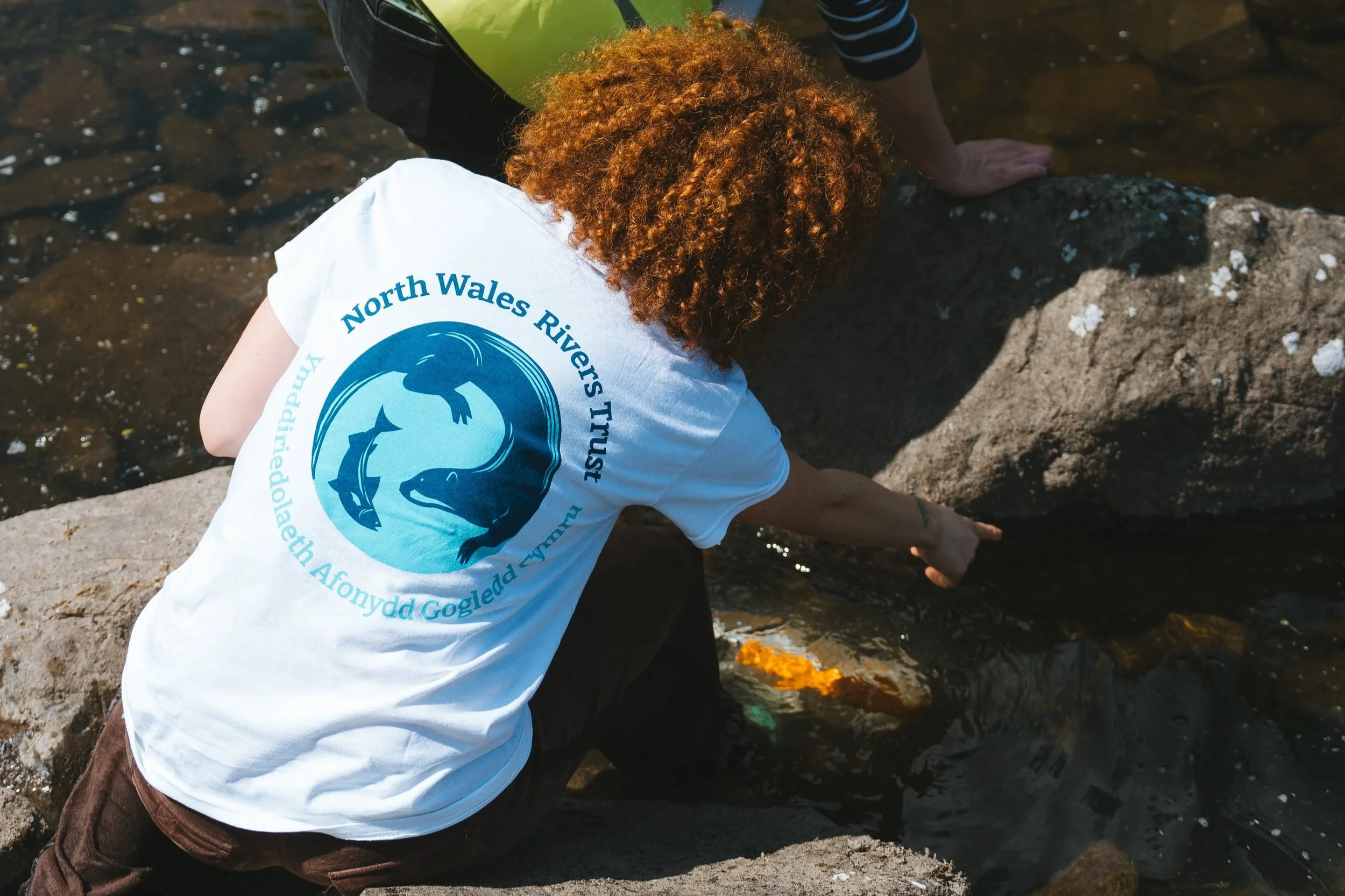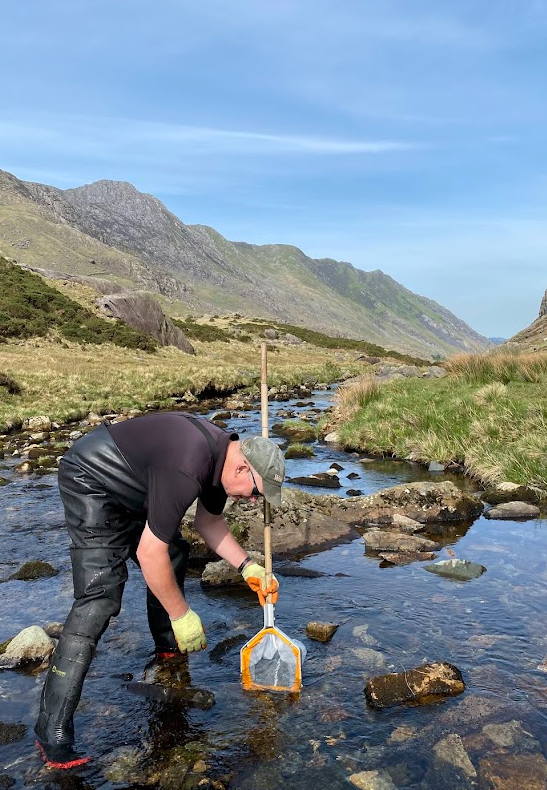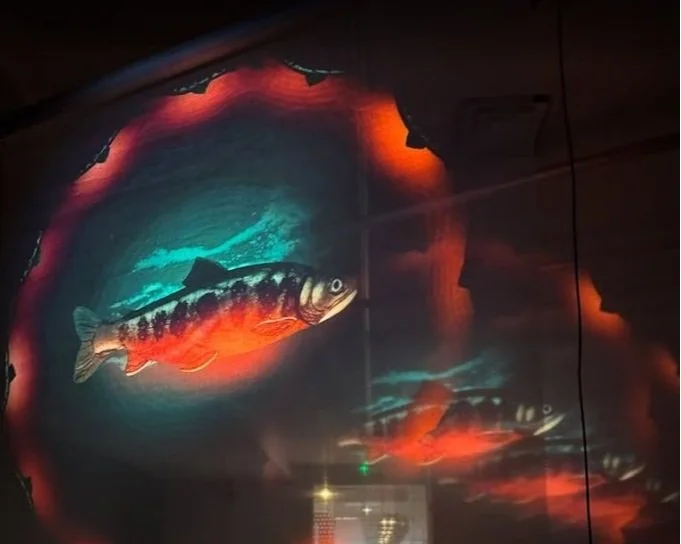
Prosiect Torgoch
This project is funded by a National Lottery Heritage grant.
Eryri Torgoch
Prosiect Torgoch is an exciting initiative funded by the National Lottery Heritage Fund. Dedicated to the preservation of the native Eryri Torgoch. This project focuses on the protection of the Arctic char (torgoch in Welsh), a rare and iconic species native to the lakes of North Wales.
Learn more about the Eryri Torgoch and why they are so unique.
Swimming on the edge of extinction
In Wales there are just three natural Arctic charr populations, Llyn Bodlyn, Llyn Padarn, and Llyn Cwellyn. Of these lakes, Llyn Cwellyn appears the most likely to offer viable long-term habitat owing to its larger volume of cool, well oxygenated refugia habitat and the absence of major and complex disturbances of the type impacting Llyn Padarn. However, worryingly, recent temporal analysis of data between 2007 and 2019 indicate a significant decline in deep water oxygen driven by an increase in nutrients entering the lake (Smith, 2022).
Issues facing the TorgoCh in North Wales
The Eryri Torgoch, or Arctic charr, is a cold-adapted species facing several significant challenges that threaten its populations and the health of its habitats:
Nutrient Enrichment (Eutrophication): Excessive nutrients, particularly nitrogen and phosphorus from agricultural runoff, sewage, and industrial activities, can lead to nutrient-rich waters. This results in algal blooms that deplete oxygen levels, directly impacting the health and survival of Arctic charr.
Water Temperature Changes: Arctic charr thrive in cold waters, and rising temperatures—likely due to climate change—disrupt their breeding and feeding patterns. These temperature changes pose a serious challenge to their survival in the UK's already mild climate.
Water Quality and Pollution: Pollutants from various sources can degrade water quality, posing health risks to Arctic charr. This includes contaminants from agricultural practices and industrial discharges, which can directly affect the fish and their habitats.
Habitat Disturbance: Human activities, such as construction, water extraction, and recreational use, can disturb critical habitats. These disturbances make it difficult for Arctic charr to find suitable areas for breeding and feeding.
Invasive Species: The introduction of non-native species can lead to competition for food and habitat. Species like roach and perch have increased in distribution and pose a significant threat to the survival of Arctic charr by competing for resources and potentially preying on juveniles.
The SciencE
PALEOECOLOGICAL STUDY
In 2024, a sediment core was collected from Llyn Cwellyn to assess long-term changes in water quality, catchment inputs, and historical contamination. The study provides a timeline of environmental conditions over approximately the last 150 years.
Key findings:
Sedimentation: Sediment accumulation has risen six-fold since ~1963 (from ~0.5 to ~3.1 kg/m²/year), risking smothering of Arctic charr spawning gravels and reducing egg survival.
Elemental Composition: Most elements are typical for upland lakes. Manganese is higher than in some sites, which may affect early charr development if levels increase.
Nutrients: No evidence of eutrophication; phosphorus remains stable, supporting good oxygen levels important for spawning success.
Chronology: Clear dating markers (e.g., 1963 Cesium-137 peak) help link erosion, land use, and sediment inputs to inform habitat management.
Overall, the findings showed that while nutrient levels remain stable, increasing sedimentation is the main threat to Arctic charr spawning grounds. Reducing catchment erosion will be essential to protect breeding success. Despite pressures, the lake’s generally stable nutrient profile supports our view that Llyn Cwellyn remains the most viable refuge for Arctic charr in the coming years.
Water quality STUDY
As part of Prosiect Torgoch we undertook an intensive programme of water quality monitoring in the upstream catchment of Llyn Cwellyn to better understand nutrient inputs to the lake.
The survey programme involved continuous monitoring of nutrient levels in the Gwyrfai using sondes. These instruments remotely measured and logged nitrates, ammonium, dissolved oxygen, and turbidity at 30-minute intervals. Over the course of the year, Antony, the NWRT officer for Prosiect Torgoch, also collected spot samples from many of the small streams entering the lake.
The findings were supported by recent data published by Natural Resources Wales, that show that the Gwyrfai is failing it’s phosphates targets. These inputs can influence oxygen levels and turbidity in the lake, with potential impacts on the deep-water habitats essential for the survival of Arctic charr (Torgoch). This has informed the nature based interventions in the Cwellyn/Gwyrfai catchments.
e DNA Testing
With the support of Prosiect Torgoch volunteers we carried out environmental DNA (eDNA) surveys in the Prosiect Torgoch catchment to monitor Arctic charr during spawning and inform conservation.
Five Llyn Padarn tributaries—Hwch, Nant Peris, Afon y Bala, Fachwen, and Goch—were sampled under strict contamination controls. Early November sampling returned negative results, confirming no residual DNA. In December, charr DNA was detected in Afon y Bala, reinforcing its importance, and for the first time in Fachwen, suggesting spawning use there.
No positives in Hwch or Nant Peris may reflect barriers blocking access. Separately, eDNA surveys at Llyn Cwm Buchan, Llyn Cwm Dulyn, and Llynnau Cwm Silyn found no evidence of undiscovered charr populations, supporting their suitability as translocation sites.
The findings helped identify areas for the conservation team to focus habitat restoration efforts.
community
The Torgoch is an emblematic fish that the local community is proud to have shared their waterways with since the Ice Age. Its story is deeply rooted in the heritage of Llyn Cwellyn and Llyn Padarn, and support for the project has grown as people reconnect with this unique part of their natural history.
This project set out to build on that connection—upskilling the community with the knowledge and tools to understand the pressures facing their local waters and to take meaningful action to protect them.
Prosiect Torgoch Volunteer Hub
We have trained up our Prosiect Torgoch volunteer group to become a Smart Rivers Hub. Volunteers took part in a two-part training programme covering how to collect invertebrate samples and identify them using microscopes.
So far, they have completed both autumn and spring sampling and identification. The reports from this work are already proving valuable for understanding local water quality and informing conservation efforts with two reports being published.
SMART RIVERS HUB
Our Prosiect Torgoch volunteer group have become an active community hub as part of our wider Lab Dwr team. The group have been equipped with chemical testing water quality kit and training. Since early 2024 the group have collected data at various points in the Padarn & Cwellyn catchments.
This has been a fantastic way for volunteers to learn more about the health of their local lakes and rivers and the impact pressures might be having on the Eryri Torgoch.
LAB DWR
education
Children are our future conservationists and the future of the Torgoch may one day be with them! To help instill a sense of pride and responsibility in looking after our precious natural resources and the life they support we have run a series of educational workshops with local schools.
The Prosiect Torgoch education initiative has collaborated with teachers, educators, and students across Gwynedd to raise awareness about the Eryri Torgoch and highlight the significance of protecting freshwater ecosystems.
Through hands-on activities, workshops, and educational resources, the project has introduced pupils to the life cycle of the Eryri Torgoch, the environmental pressures it faces, and the broader role that healthy freshwater habitats play in supporting biodiversity.
In addition to science-focused activities, we have also offered creative outlets for students to engage with these themes, such as our animation workshops and collaborative art sessions. These workshops enable students to help tell the species’ story and spread environmental awareness.
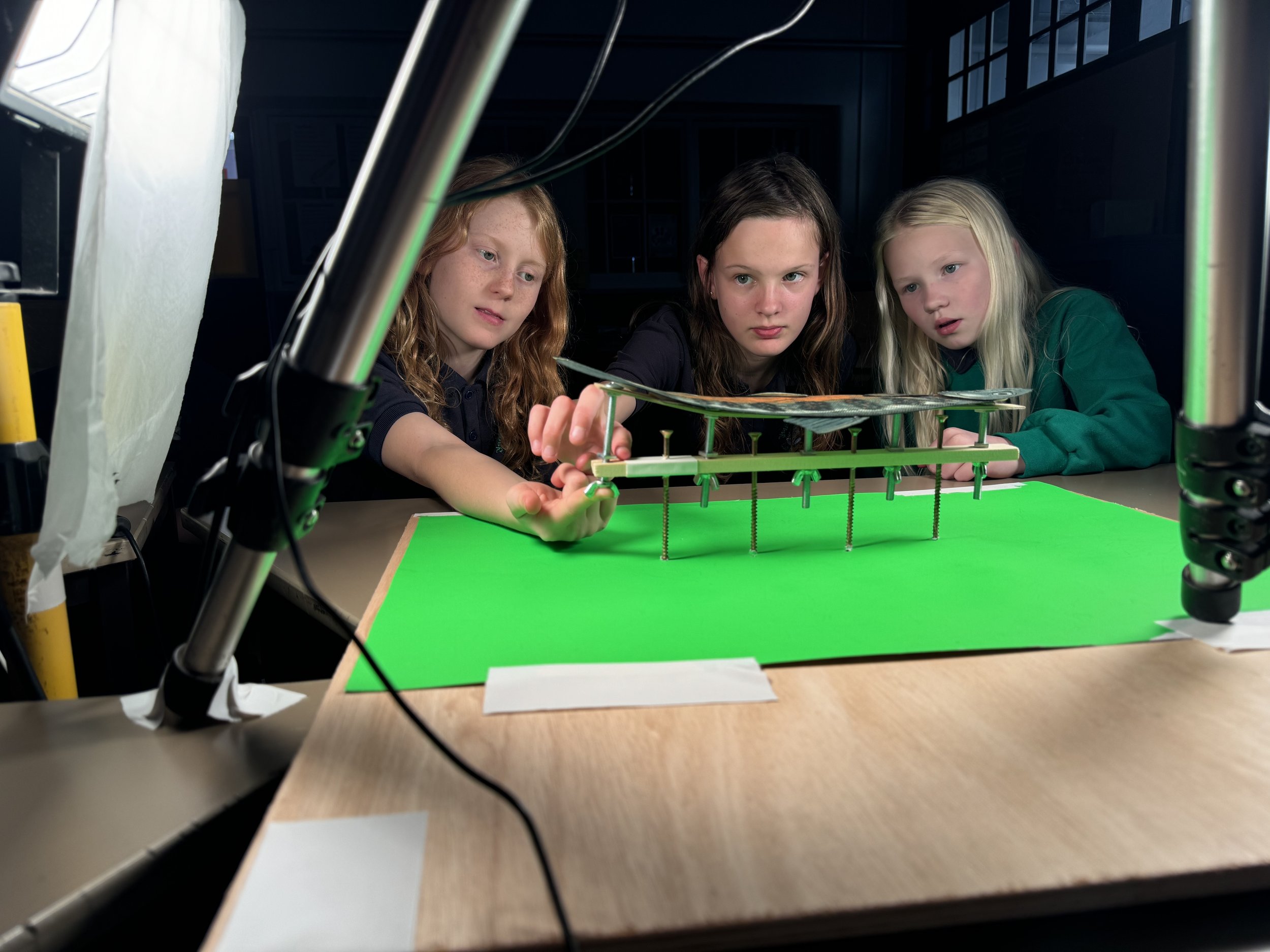
"Our Prosiect Torgoch programme inspires the next generation of environmentalists by engaging young people in conserving threatened species."
— Poppy Backshall ,Community Engagement & Education Officer
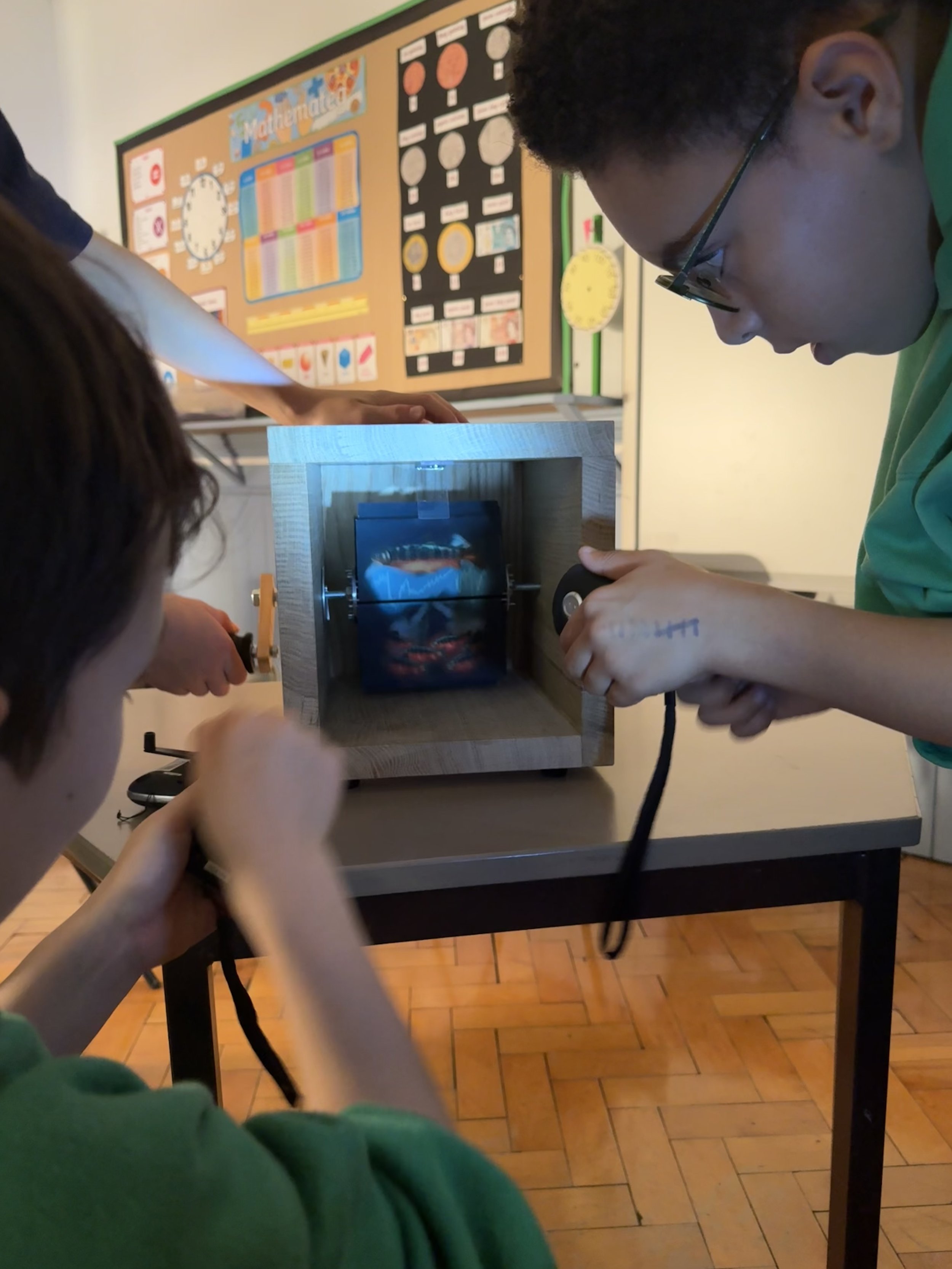


Heipolymnion
An artistic interpretation of the plight of the Eryri Torgoch’s
By Sean Harris & Ysgol Dolbadarn
Above video footage of outdoor screening at Llyn Padarn by Hollie Harmsworth
Heipôlymnion, a digital animation by visual artist Sean Harris, draws inspiration from this remarkable species and the deep, stratified waters in which it resides. The title refers to the hypolimnion—the cold, oxygen-rich lower layer of a lake. The work evokes the sense of mystery and fragility within these underwater worlds and explores the interdependence between people and nature.
The animation was brought to life with the creative support of pupils from Ysgol Waunfawr and Ysgol Dolbadarn, whose ideas and artwork helped shape the story and raise awareness of the Torgoch. Their involvement has been central to the spirit of the project, encouraging local communities to reconnect with their unique natural heritage.
As Sean Harris reflects:
“This commission from North Wales Rivers Trust is tapping into an archetypal technology. It is however a cultural mechanism that has become more scarce as our compartmentalised ‘Western’ society has increasingly sought to separate itself from Nature. This is a futile endeavour because we are Nature; if it withers, so do we... For this Ice Age refugee, co-evolved over millennia with the mountain lakes it inhabits, is ambassador for an entire ecosystem... The distinctively coloured amber-to-red belly of the male fish is a warning light; an alarm signal to us from the rapidly suffocating life support system on which our own existence is entirely dependent.”
Heipoymnion exhibited at Galeri Caernarfon from 03/06/25 - 04/07/25











